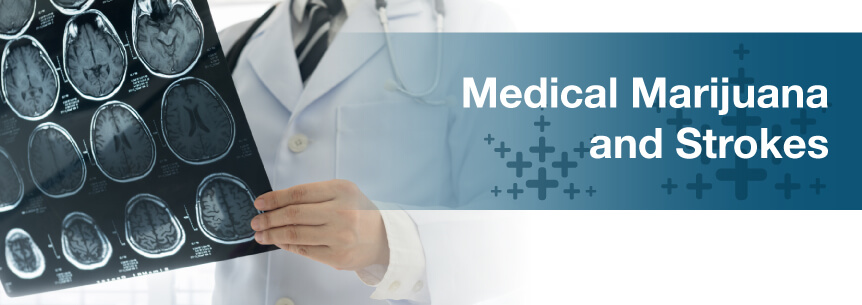
According to the National Stroke Association, nearly 800,000 people experience a stroke each year. They occur at rates of nearly one every 40 seconds, and stroke is the fifth leading cause of death in the U.S. It is also the number one cause of disability among U.S. adults.
We all know the damage smoking cigarettes can do, including causing cancer, heart disease and stroke. The question now is if marijuana can do the same.
While smoking cigarettes increases your risk of certain health problems like cancer, heart disease and stroke, a study published in the journal of the American Association shows there’s no association between cannabis and additional risk of stroke.
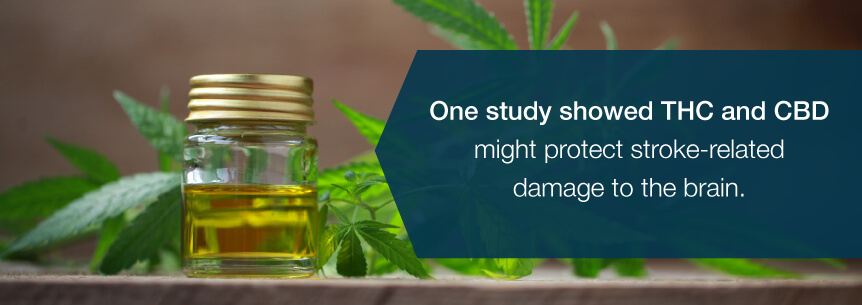
One study showed THC and CBD might protect stroke-related damage to the brain. Researchers used rats in the study, which showed cannabinoids block glutamate, a neurochemical leading to a toxic oxidizing molecule accumulation that kills the cells in the brain.
Your brain produces glutamate when it’s oxygen-deprived, as is the case of arterial bleeding or blood clot. According to the study, CBD is a better choice for patients suffering from strokes since it works as an effective antioxidant, blocking glutamate damage without delivering any psychoactive effect.
Cannabinoids effectively limit cell damage and provide patients with neuroprotective effects following a stroke. When you administer cannabinoids immediately after a stroke, they protect astrocytes and neurons from damage leading to improved histological, functional, neurobehavioral and biochemical recovery.
Find A Doctor Find A Dispensary
Stroke patients often experience feelings of:
Medical cannabis for stroke can help with these stroke symptoms as well as the following.
Post-stroke depression can produce symptoms varying in frequency, severity and duration. Symptoms of depression may include:
Chronic stress can suppress the endocannabinoid production of your brain, leading to depression-like behavior. Cannabis for stroke treatment helps to restore normal function and alleviate depression symptoms.
The Hawaii Journal of Medicine & Public Health published a 2014 study showing medical cannabis offers the benefit of pain management. While using cannabis, study participants reported a 64 percent pain reduction. Many could also sleep better and had lower levels of anxiety while using pot.
Marijuana for stroke has natural anti-inflammatory properties. These are helpful in treating stroke-related brain inflammation.
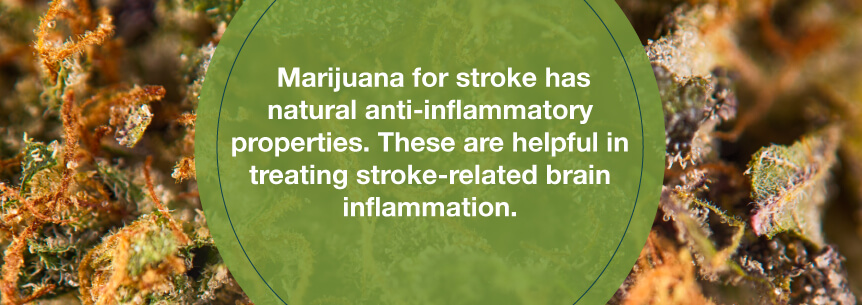
One symptom of a stroke is severe headaches coming on unexpectedly and for no known reason. One study found cannabis’s active compounds effectively reduced the frequency of pain caused by acute migraines better than prescription medications for migraines and caused fewer side effects.
Medical marijuana for strokes helps relieve your symptoms in different ways. Below are certain cannabis strains, along with the symptoms they’re intended to treat.
If you use marijuana as stroke treatment and are worried about your stroke risk, some things you can do include:
Dr. David Allen, a retired heart surgeon, focuses his medical practices on cannabis. He says eat raw cannabis to prevent heart disease and stroke. Eating raw marijuana doesn’t get you high and has great medicinal effects, according to Dr. Allen.
Starting your cannabis and stroke treatment shouldn’t be difficult. You’ll first need to check with your state laws regarding medical marijuana. Then, you’ll want to search for a medical marijuana doctor to give you a recommendation. Once you have your recommendation and medical marijuana card, you can find a cannabis dispensary and look for your ideal cannabis strains.
Find A Doctor Find A Dispensary
A stroke is what happens when the flow of oxygen-rich blood to the brain stops. It’s often the result of a blood clot, bleeding in the brain or blood vessels becoming blocked. When this occurs, your brain cells begin to die rapidly, often resulting in severe disability or even death.
Ultimately, strokes are medical emergencies requiring prompt medical attention. Fast action can minimize the impact and effects of the stroke on the brain while reducing risks of complications.
Because the brain is such a complex organ controlling essentially every bodily function, strokes are especially devastating. According to the American Heart Association (AHA), women fare worse than men, in general, in the aftermath of a stroke — experiencing more limitations of activities and worse health-related quality of life. According to Mayo Clinic, fewer Americans are dying from strokes today than 15 years ago.
If you suspect you or someone you love is having a stroke, know that every second matters. Getting fast treatment for stroke helps reduce the total amount of damage done to the brain and can make the difference from a complete recovery, permanent disability or death.
Knowing these signs and symptoms of stroke, as reported by the Centers for Disease Control and Prevention (CDC), may help you save a life – perhaps even your own.
The common theme here is “sudden,” and there isn’t a lot of time to second guess or play around. If you see someone you love experiencing these symptoms, it’s far better to err on the side of caution by seeking unnecessary medical attention than to wait to confirm what is happening and miss an opportunity to preserve life and/or quality of life for the person you love.
The first thing you need to do is call 911 and discuss the situation with the responder on the line. Prompt medical attention is essential.
Other conditions can resemble a stroke. Because a stroke has the potential to be devastating, it’s best to rule it out first before beginning to look for indications of other conditions sharing similar symptoms, such as:
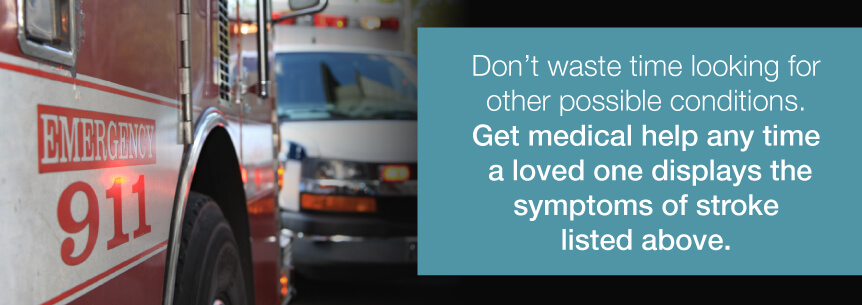
Don’t waste time looking for other possible conditions. Get medical help any time a loved one displays the symptoms of stroke listed above.
The American Stroke Association reports there are three types of stroke:
You can’t tell in the beginning whether the symptoms are from a major stroke or TIA. It is better to seek medical attention first and sort out the details later. Paying attention to the symptoms of TIA, though, may save your life, not to mention your quality of life, by allowing you to get help before significant damage begins to occur within your brain.
The effects of a stroke can be both physical and mental or emotional. Few medical events can cause quite the life-altering consequences a stroke brings to bear.
There are mainly three areas of the brain strokes affect:
Depending on which area the stroke impacted, victims will experience different effects.
Functions strokes may hinder include the following:
It is possible to preserve these functions and avoid much of the damage stroke can cause. Get prompt medical attention at the first sign of a stroke to reduce the risks associated with them.
The list of mental and emotional effects of a stroke are nearly as long as the physical effects. Few conditions cause quite the lifestyle changes a devastating stroke brings into the picture. Some of the emotional effects of a stroke include:
Emotions such as these are common to experience, according to the National Stroke Association, in the aftermath of a medical event like a stroke. Treatments, including medical marijuana, help to minimize the impact of some of them, such as depression, anxiety, and more. Social support programs can assist with some of the other symptoms.
The CDC provides the following stroke facts:
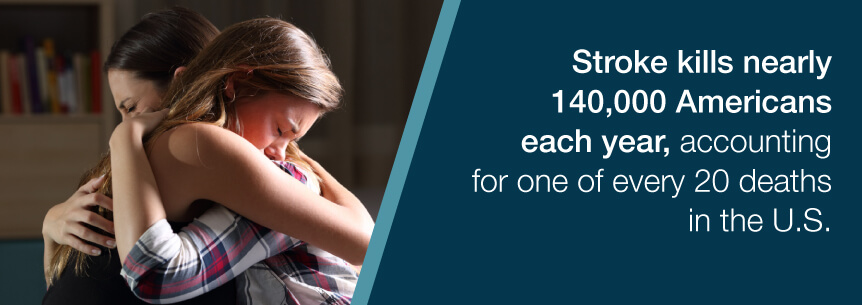
Dating back more than 2,400 years ago, Hippocrates, recognized as the “father of medicine,” first acknowledged the condition now known as stroke. He named the condition apoplexy after the Greek word meaning “struck down by violence.”
As medical science continued to study the condition, apoplexy became referred to as a stroke, caused by lack of blood supply to the brain.
Treatments vary from one patient to the next and according to the type of stroke occurring, the amount of time passed and the apparent severity of the symptoms and situation.
In this type of stroke, physicians focus on quickly restoring blood flow to the brain. Speed is of the essence. If you arrive at an emergency medical facility within three hours after experiencing the first symptoms, you’ll likely receive aspirin to thin the blood and prevent blood clots from forming. You may also receive TPA (tissue plasminogen activator) intravenously. TPA is fast-acting and breaks up the clot to restore blood flow to the brain.
Other treatments include the following:
With this type of stroke, physicians focus on controlling the bleeding and reducing pressure on the brain. For patients who are on blood-thinning medications, blood transfusions may be ordered to help thicken the blood and slow the rate of the bleeding.
Additionally, your physician may surgically repair the blood vessel causing problems via one of the following procedures:
The highest priority when seeking treatment for stroke is to preserve life and quality of life. That’s why timing is so critical in all stroke treatment efforts. The sooner medical personnel administer treatment, the better the odds for a favorable outcome.
If you suffered a TIA, you’ll require further testing to determine the cause. For instance, if you have significantly narrowed carotid arteries, your doctor may recommend a procedure to widen them to prevent another transient ischemic attack.
You may be advised to take medications, such as aspirin, antiplatelet drugs or hypertension medicines to prevent a stroke. In the event that you’re at high risk of an impending stroke following a TIA, you may receive monitoring in a hospital.